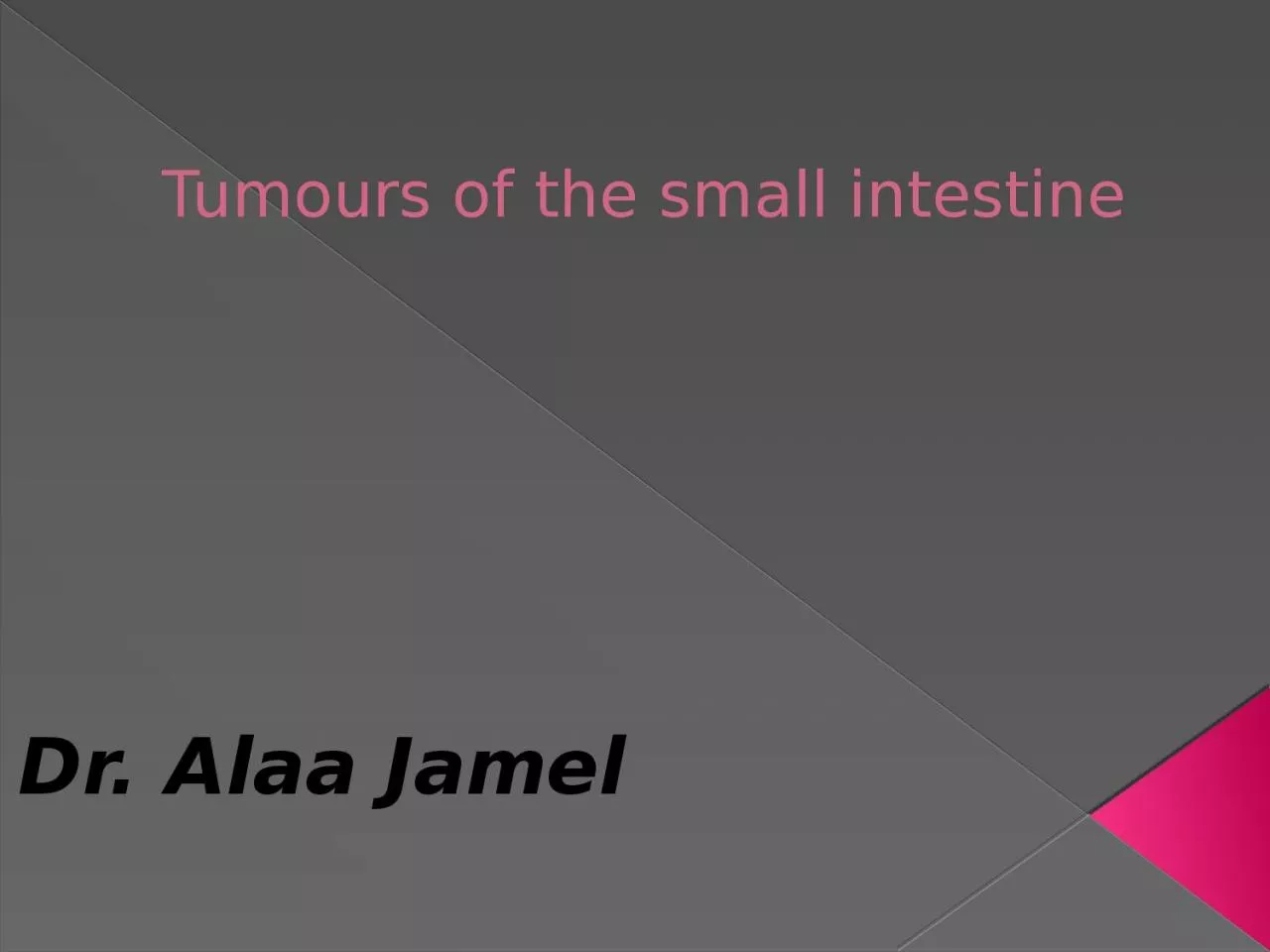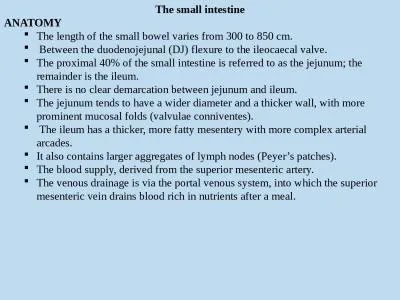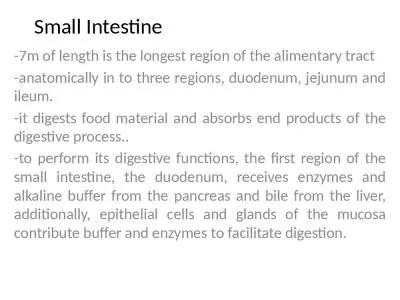PPT-Tumours of the small intestine
Author : singh | Published Date : 2024-02-09
Dr Alaa Jamel Tumours of the small intestine Classification Benign Adenoma Gastrointestinal stomal tumour lio myoma Lipoma Hamartoma eg peutzjeghers syndrome
Presentation Embed Code
Download Presentation
Download Presentation The PPT/PDF document "Tumours of the small intestine" is the property of its rightful owner. Permission is granted to download and print the materials on this website for personal, non-commercial use only, and to display it on your personal computer provided you do not modify the materials and that you retain all copyright notices contained in the materials. By downloading content from our website, you accept the terms of this agreement.
Tumours of the small intestine: Transcript
Download Rules Of Document
"Tumours of the small intestine"The content belongs to its owner. You may download and print it for personal use, without modification, and keep all copyright notices. By downloading, you agree to these terms.
Related Documents














